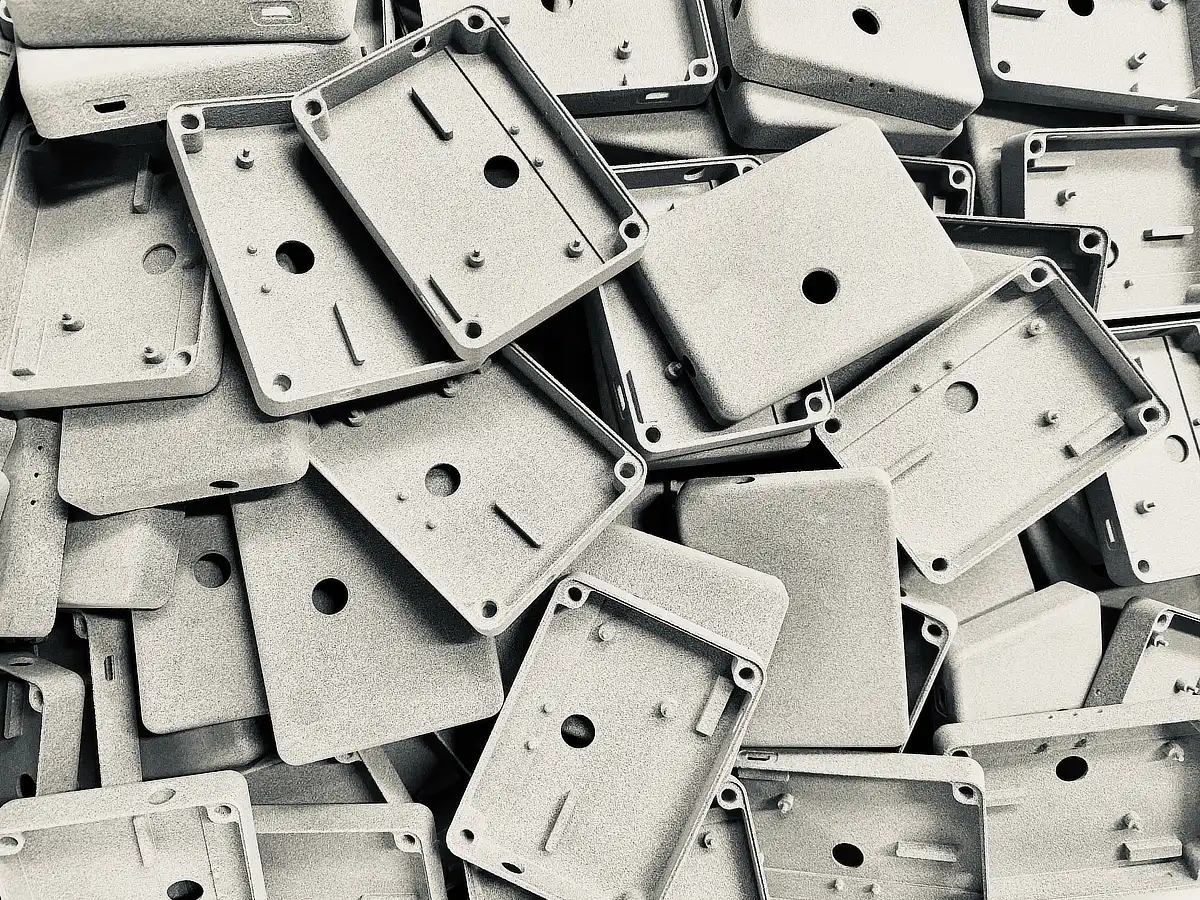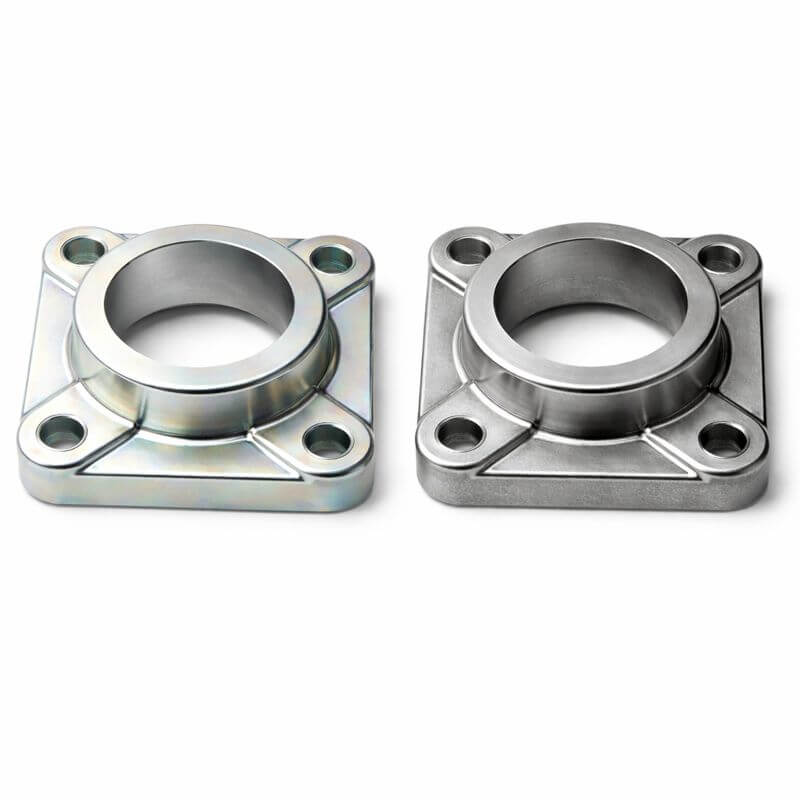2 min read
Young’s Modulus: What It Is, How It’s Calculated and Why It Matters
Young’s modulus, also known as the longitudinal modulus of elasticity, is one of the most important mechanical properties of materials. It is used...
3 min read
![]() Weerg staff
:
Jun 19, 2024
Weerg staff
:
Jun 19, 2024

3D printing is increasingly permeating our everyday lives, finding applications across a wide range of sectors, from design pieces to common household items. However, the true revolutionary potential of this technology emerges in the manufacturing sector. Industrial 3D printing is establishing itself as a real revolution, radically transforming production processes and opening up new possibilities for innovation and efficiency.
1. MASS CUSTOMISATION
Industrial 3D printing revolutionises production by enabling the creation of customised parts on a large scale. This capability is particularly advantageous in sectors where customisation can significantly enhance performance and meet specific customer requirements. Thanks to the flexibility of 3D printing, it is possible to commence serial production of hundreds, thousands, or even tens of thousands of customised pieces, each designed to meet unique specifications. This technology allows for rapid market response and the offering of highly specialised products, enhancing companies' competitiveness. Mass customisation not only increases customer satisfaction but also opens new avenues for innovation, allowing the exploration of bespoke designs and solutions that perfectly meet the individual needs of each project.
2. ELIMINATION OF THE WAREHOUSE
One of the main revolutions brought about by industrial 3D printing is the possibility of implementing just-in-time production, eliminating the need for inventory. Traditionally, companies must forecast future demand and produce or purchase components in advance, storing them until they are needed. This involves significant costs related to storage, inventory management, and the risk of product obsolescence. With 3D printing, it is possible to produce exactly what is needed, when it is needed. This approach not only reduces the costs associated with maintaining inventory but also increases the flexibility and responsiveness of the company to market demands. Additive manufacturing allows for quick adaptation to demand changes without dealing with excess or insufficient inventory. Additionally, the ability to produce customised parts on demand further reduces the need to stock large quantities of standardised products. Eliminating inventory also means more efficient resource management and waste reduction. Companies can save space, energy, and materials, contributing to a more sustainable production approach. This just-in-time production model, made possible by industrial 3D printing, represents a fundamental shift in how companies manage their operations, offering significant economic and environmental benefits.
3. TIME REDUCTION
Traditionally, the prototyping process can take weeks or even months, slowing product development and delaying market entry. With the advent of industrial 3D printing, prototypes can be made in a few days, drastically reducing development times and accelerating time-to-market. This technology allows for a quick transition from conceptual idea to mass production using the same method, both for prototyping and actual production. This ensures that the final result meets expectations from the early stages of the process. Another significant advantage of industrial 3D printing is the ability to make revisions and improvements quickly and without significant additional costs, thanks to the absence of fixed moulds. During the various stages of prototyping and production, it is possible to make modifications and optimisations in real-time, quickly responding to feedback and new design requirements. This flexibility not only further reduces overall development times but also improves the quality of the final product, enabling companies to be more responsive and competitive in the market.
4. COMPLEX DESIGNS AND PRE-ASSEMBLED OBJECTS
3D printing revolutionises the design process by allowing the creation of complex geometries that would be difficult or impossible to achieve with traditional manufacturing methods. This opens new possibilities for design and innovation, enabling engineers to experiment with cutting-edge shapes and structures that enhance product performance and efficiency. Additionally, it is possible to produce objects already assembled. This feature significantly reduces labour time and costs associated with assembly, simplifying the production process. With the ability to integrate moving components and complex mechanisms directly into the printing phase, additive manufacturing offers a level of precision and functionality that surpasses the limitations of traditional methods. The capability to create pre-assembled objects not only speeds up the production cycle but also reduces the risk of human error during assembly, ensuring greater consistency and quality in the final product.

3D printing continues to transform the manufacturing landscape, demonstrating its revolutionary potential across a wide range of applications. From design pieces to everyday objects, this technology is increasingly permeating our lives. However, the true impact of 3D printing emerges in the industrial sector, where it has the power to radically transform production processes and open new avenues for innovation and efficiency.
The advantages of industrial 3D printing are numerous and significant. The ability for mass customisation allows companies to respond quickly and accurately to customer needs, improving market competitiveness. The elimination of inventory, thanks to just-in-time production, reduces costs and optimises resource management. The reduction of prototyping and production times accelerates time-to-market, while the capability to create complex designs and pre-assembled objects simplifies the production process and enhances the quality of the final product.
For companies looking to maximise these opportunities, Weerg offers the best online industrial 3D printing service. With an advanced platform and a team of experts, Weerg can provide tailored solutions for every project, guaranteeing excellent results in a short time. Discover how Weerg can help you innovate and transform your production.

2 min read
Young’s modulus, also known as the longitudinal modulus of elasticity, is one of the most important mechanical properties of materials. It is used...

3 min read
Galvanisation is one of the most effective and widely used surface treatments for protecting steel and other metals from corrosion, oxidation and...

2 min read
VALOI, a brand of the Finnish company Kameratori Oy and specialised in film-digitalisation systems for the home market, has started a collaboration...